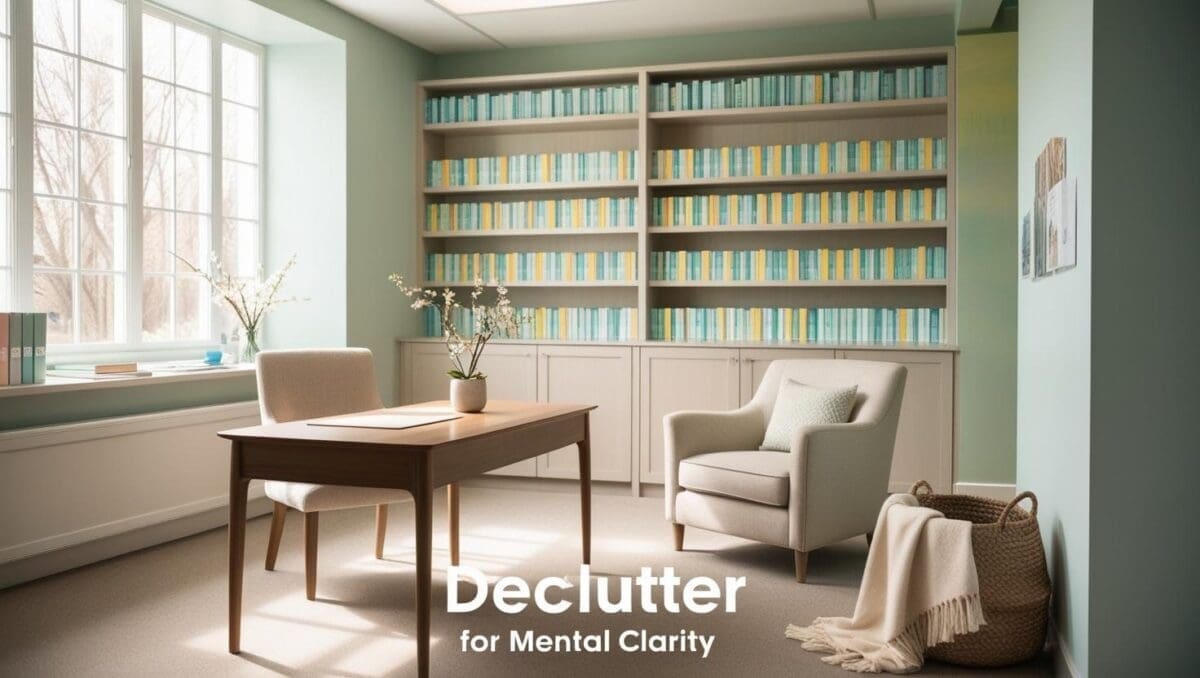As a counselor, I’ve stood in front of my closet many mornings asking the same question you might be asking now: How do I look professional, approachable, and still feel like myself? Your clothing as a psychologist or therapist does more than meet a dress code—it becomes part of the therapeutic environment.
When you walk into your office, school, or clinic, your presence should signal warmth, trust, and confidence. But that doesn’t mean giving up comfort or authenticity. In this guide, I’ll help you find a wardrobe that reflects your professional identity without sacrificing style or ease.
1. Understanding the Psychology Behind Dressing for the Job
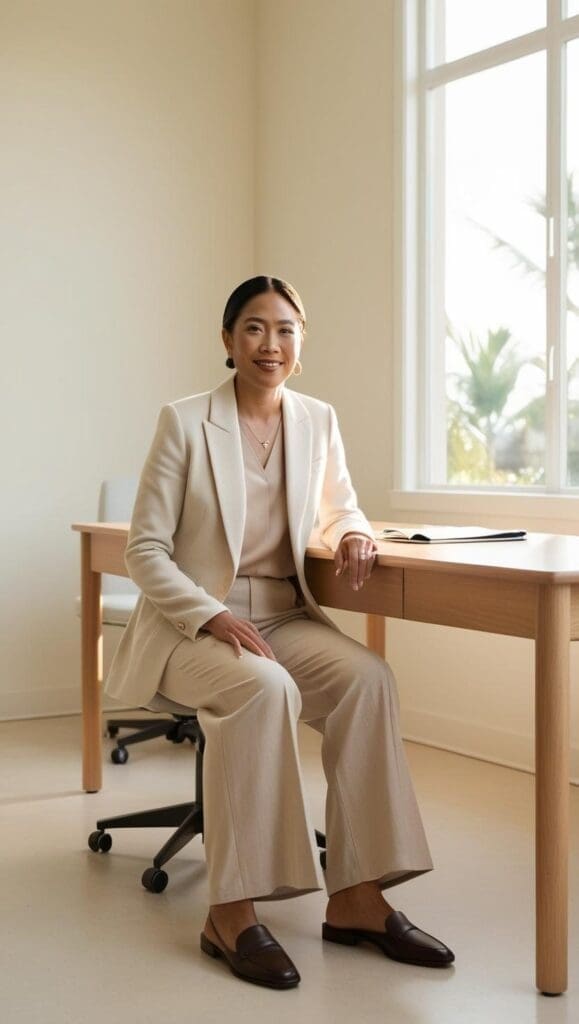
The clothes you wear don’t just affect how others perceive you—they influence how you feel, too. Psychologists often aim to:
- Project calm, safety, and professionalism
- Avoid intimidating or flashy outfits
- Balance authority with warmth
Studies show that professionals who dress in a relatable yet tidy way can foster more trust and openness with clients. Choose clothes that make you feel grounded and aligned with your therapeutic presence.
A comforting outfit can also serve as a subtle form of co-regulation with clients, particularly in trauma-informed care. Clothing choices that communicate non-threatening confidence can lower anxiety levels and support client emotional safety.
2. What Makes a Comfortable Psychologist Outfit?
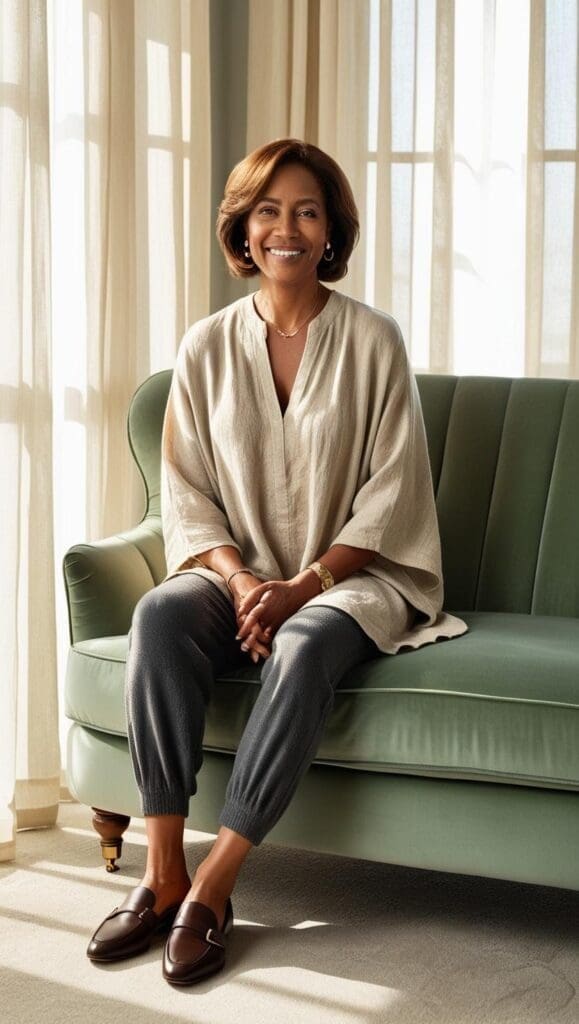
Comfort is key. You’re likely sitting, walking, and sometimes even kneeling during play therapy or school sessions. Look for:
- Breathable fabrics like cotton, modal, or bamboo
- Stretchy waistbands or wide-leg pants
- Layering options to adapt to shifting temperatures
- Low heels or chic flats for all-day wear
You also want clothing that holds up during long days. Wrinkle-resistant materials like ponte knit or lyocell can be great options for a polished look that lasts. If you’re prone to spills (hello, school therapists!), darker colors or washable fabrics can be a lifesaver.
Quick Tip: Build a capsule wardrobe with neutral tones that mix and match easily, so you spend less time deciding and more time feeling great.
3. Outfits for Different Psychology Work Settings
School or Youth Psychologist
- Soft cardigans or denim jackets
- Casual dresses with tights or leggings
- Slip-resistant shoes or sneakers
You may find yourself on the floor with kids or walking between classrooms. Prioritize movement-friendly clothing and choose pieces that balance authority with playfulness.
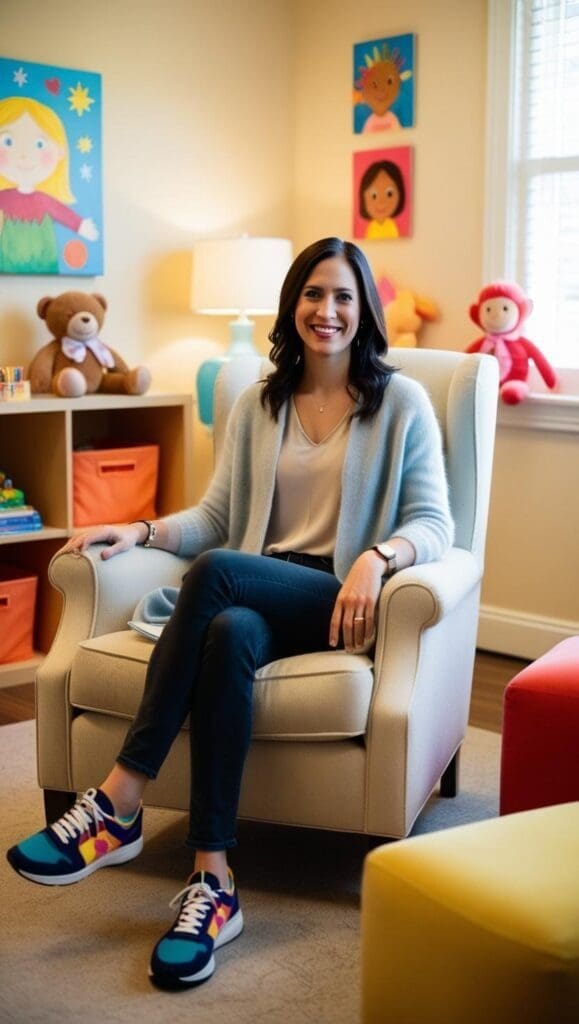
Clinical or Hospital Setting
- Smart-casual outfits with clean lines
- Blazers over blouses
- Closed-toe flats or simple loafers
In more traditional clinical settings, there may be dress codes that lean formal. A blazer instantly elevates any look, and simple accessories keep things elegant.

Private Practice
- Elegant but relaxed silhouettes
- Midi skirts, culottes, or jersey dresses
- Statement accessories to reflect personality
Private practice often allows more freedom to express personal style. Consider a minimalist dress with a longline cardigan or trousers with a silk blouse.
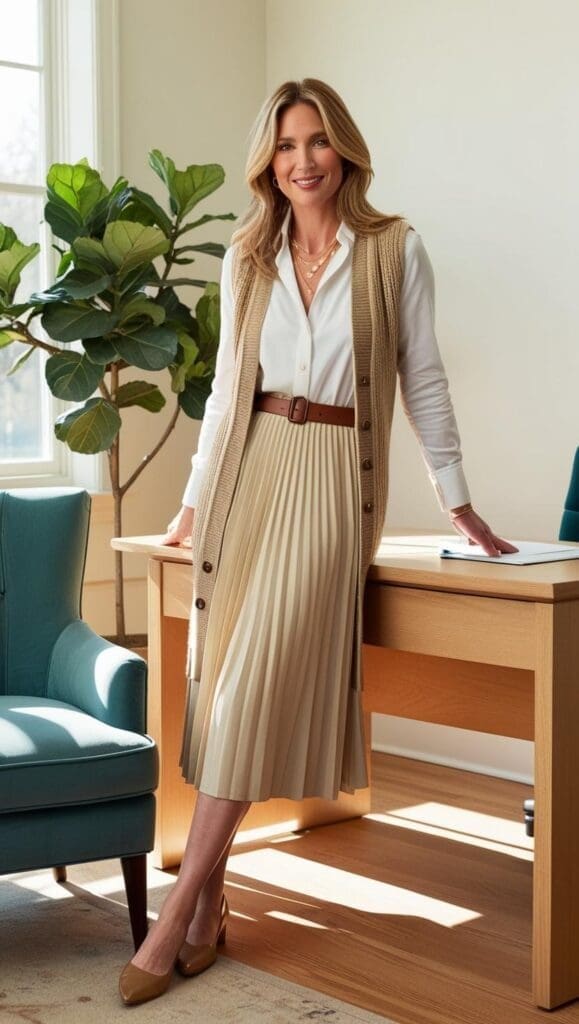
Related: Spring Therapist Outfit Ideas
4. How to Add Personality Without Breaking Professional Boundaries
Being a psychologist doesn’t mean dressing in a uniform. Subtle personal touches can make you more relatable and authentic:
- Choose calming colors that suit your skin tone
- Add texture with a scarf or jewelry
- Embrace feminine tailoring or soft patterns like florals or dots
- Let your glasses or hair accessories become part of your style signature
You can also express your interests subtly through themed accessories, like enamel pins that reflect mental health messages or nature-inspired jewelry.
Clothing should never distract from the therapeutic relationship. Comfort and clarity create safety—for both you and your client.
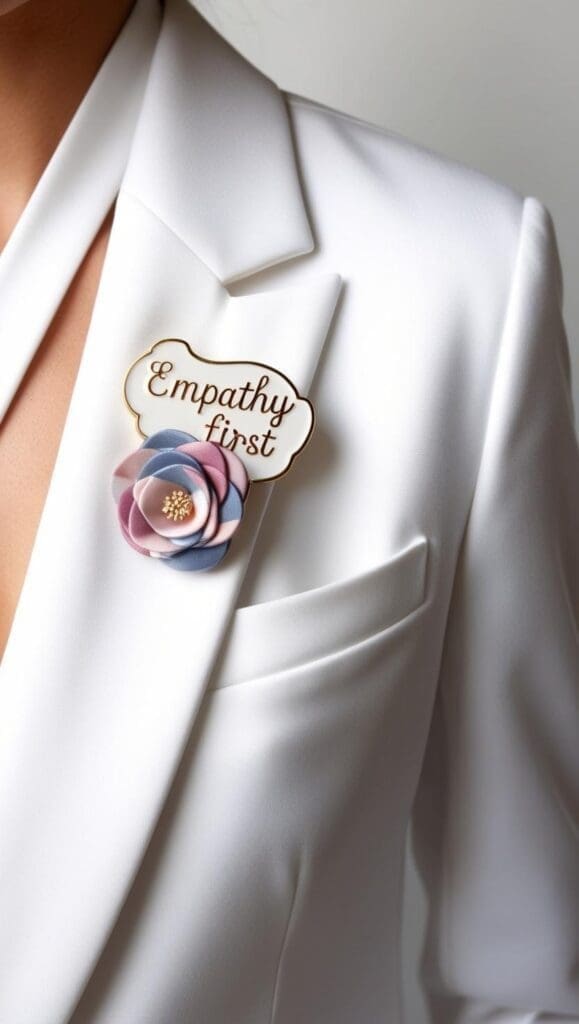
5. Therapist-Approved Wardrobe Staples and Brands for Psychologist
- Soft blazers – add instant structure without discomfort
- A-line or wrap dresses – feminine, professional, and forgiving
- Neutral-toned layering pieces – cardigans, shawls, or kimono jackets
- Stretch trousers or culottes – breathable and easy to move in
- Low-heeled or flat leather shoes – support + style
Explore more: A-Line Dresses for Therapists
Want clothes that last and feel good to wear? These brands are loved by mental health professionals for their blend of style and comfort:
- Everlane (elegant basics)
- Madewell (great for layering)
- Eileen Fisher (sustainable and soft)
- Uniqlo (affordable workwear staples)
- ABLE (ethically made fashion with personality)
- M.M. LaFleur (investment pieces for women in leadership)
Pro Tip: Consider investing in 2-3 high-quality staples and rotating them creatively with budget-friendly pieces.
6. Seasonal Style Adjustments for Year-Round Comfort
Psychologists work year-round, and your wardrobe should, too. Here’s how to adapt your outfit choices to each season:
Spring:
- Lightweight trench coats
- Pastel tones with breathable fabrics
- Loafers or block heels
Summer:
- Sleeveless midi dresses
- Linen pants and cotton blouses
- Sandals (if permitted) or slip-on flats
Fall:
- Cozy knit dresses
- Layers like long cardigans and scarves
- Ankle boots or warm-toned loafers
Winter:
- Thermal leggings under dresses
- Wool coats in calming hues
- Boots with supportive soles
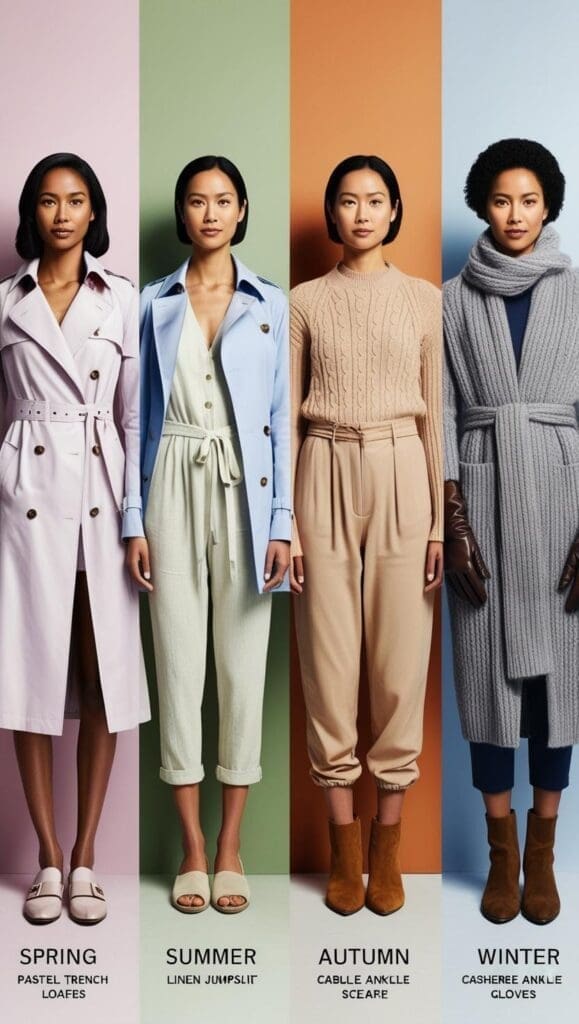
7. Wardrobe Confidence and Your Mental Health
What you wear can deeply influence how confident and grounded you feel in your sessions. A well-chosen outfit becomes a kind of uniform that signals, “I’m ready to hold space for others today.”
Taking 10 minutes to prep your outfit the night before can also be a powerful act of self-care, especially in emotionally demanding professions. It removes morning stress and helps you begin the day with intention.
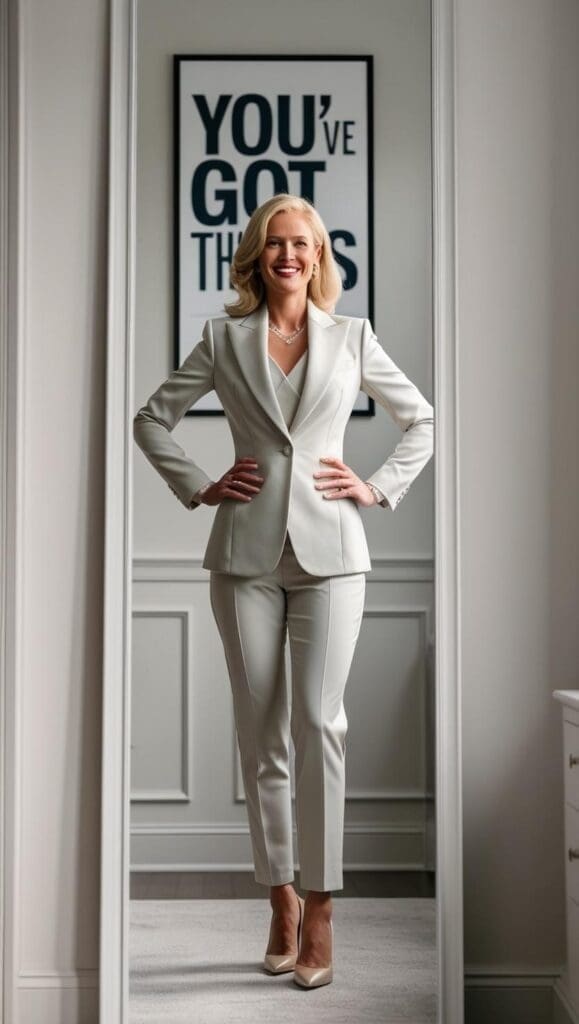
Final Thoughts
Dressing like a professional psychologist is about more than checking boxes. It’s about aligning how you look with how you want to feel—grounded, compassionate, and confident. Let your wardrobe reflect the care and insight you bring to every session.
Ready to revamp your psychologist style? Start with just one outfit change and see how it shifts your mindset. And don’t forget to pin this post for later!
For capsule wardrobe building, see our Counselor Wardrobe Pillar Guide.
Looking for more therapist style inspiration? Explore the Ultimate Style Guide for Mental Health Professionals or save your favorite outfits to Pinterest to build a vision board for your practice.
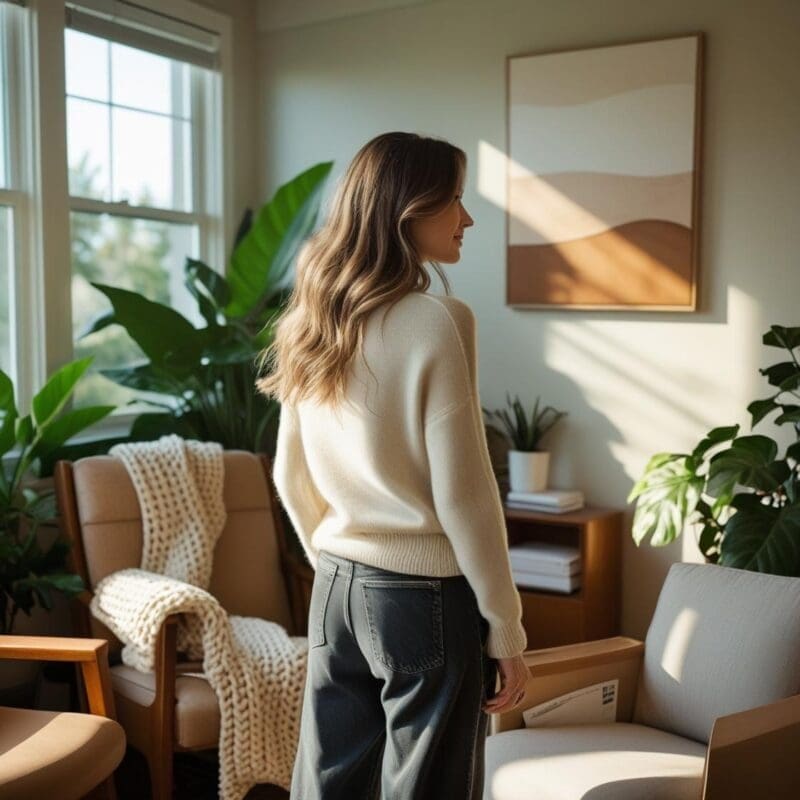
About the Author
Hi, I’m Eve, a former school counselor with a master’s degree in School Psychology and a passionate advocate for children and families navigating sensory challenges. As a mom of children with sensory sensitivities, I deeply understand the journey special-needs parents face, and I dedicate myself to researching and sharing practical solutions to help children thrive and feel comfortable in their bodies. My goal is also to empower counselors, therapists, and psychologists with creative strategies and supportive resources to enrich their everyday practice. When I’m not writing or exploring new therapeutic approaches, you’ll find me spending quality time with my family and continually seeking inspiration from everyday moments.

